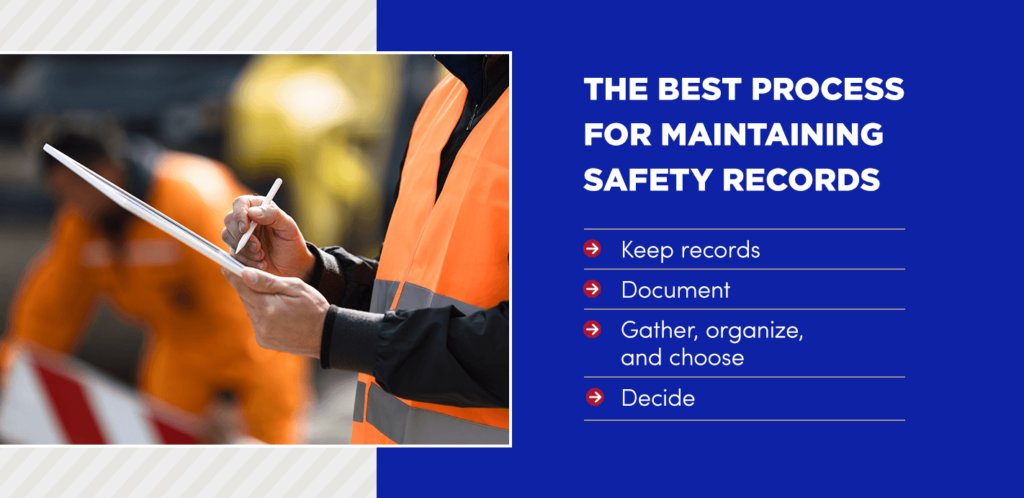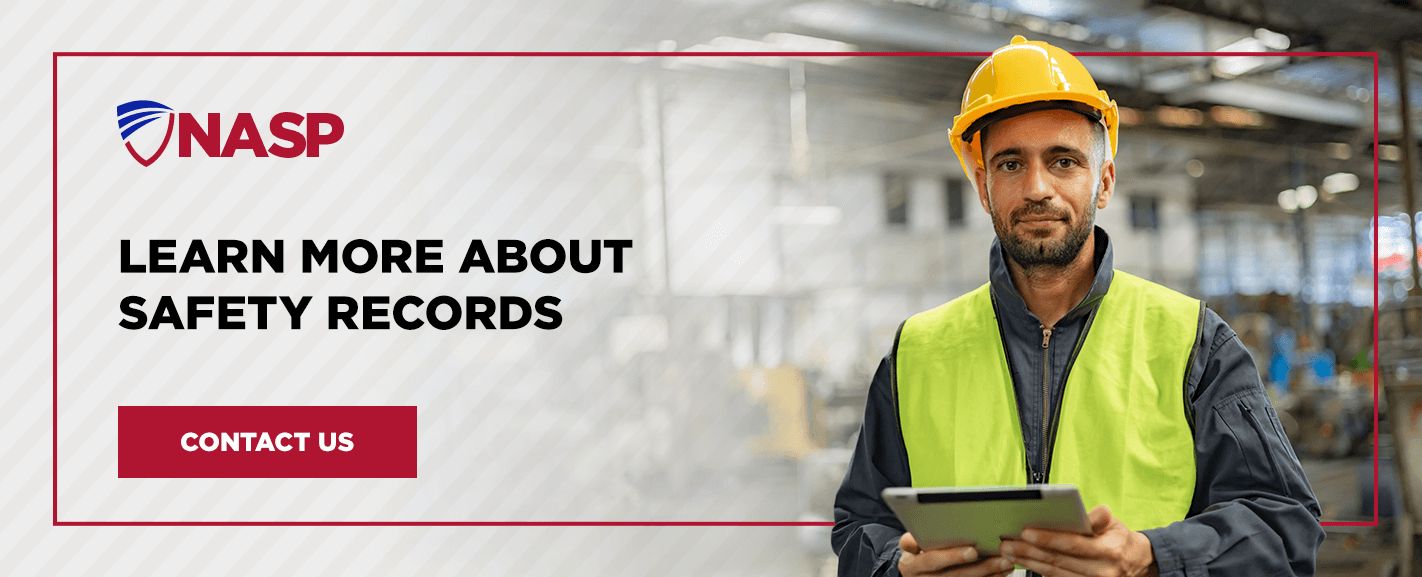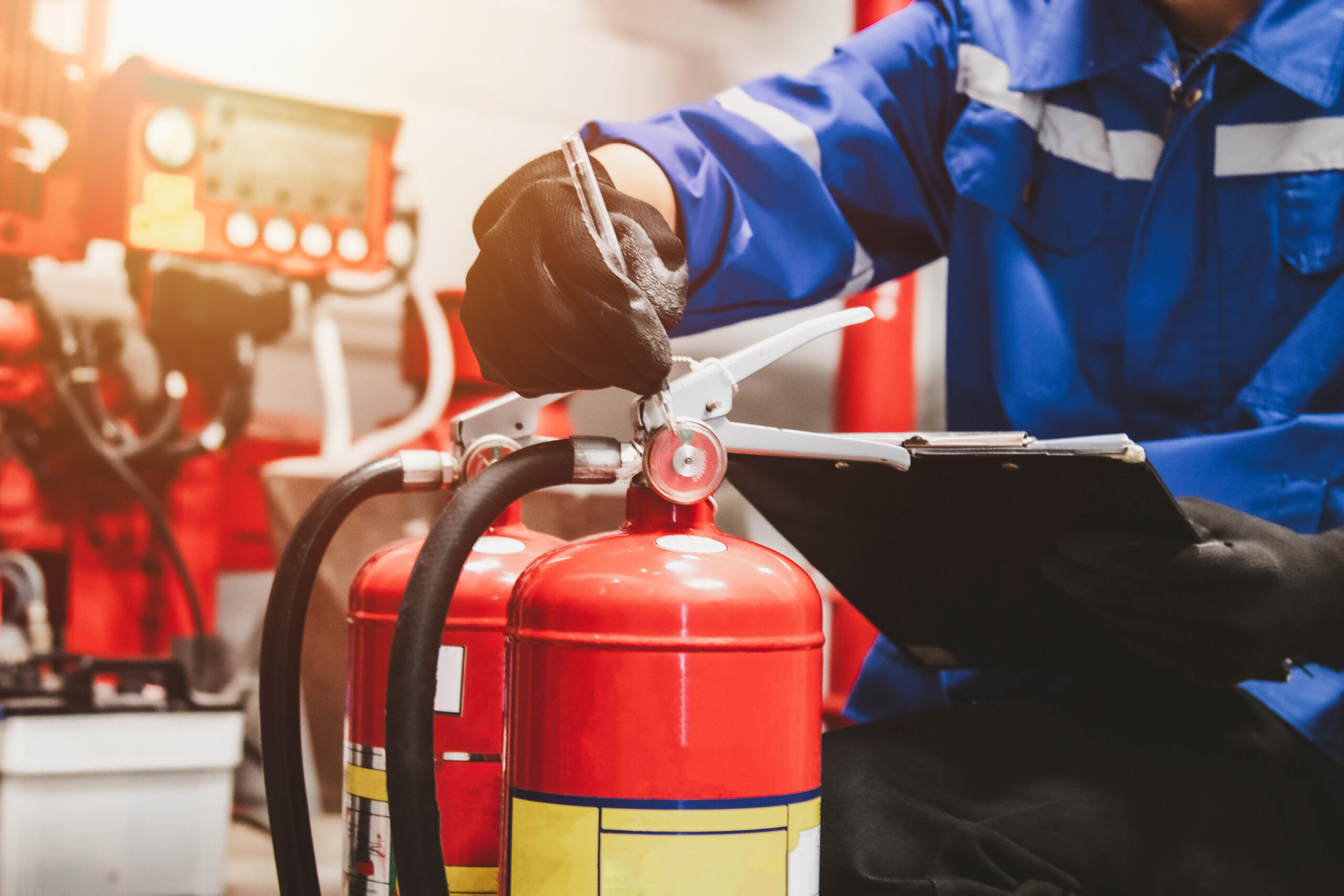How to Maintain Accurate Safety Records

Maintaining safety records helps keep your organization legally compliant and builds a culture where every employee returns home safely each day. Safety records rarely make headlines unless something goes wrong, but when an accident happens, they provide critical information. They can reveal emerging patterns linked to workplace dangers, and lives can be saved when action is taken promptly. Safety records must be accurate, accessible, and actionable.
The Occupational Safety and Health Administration (OSHA) recordkeeping guidelines provide a place to begin when setting up a new system. Plan to track all types of injury and illness OSHA requires, so you have the data ready if needed. These types include fatalities, injuries, and diseases that require more than first aid. If medical treatment is necessary, you must record it.
Why Is Safety Recordkeeping in the Workplace Important?
Accuracy and speed are important when you’re documenting safety-related incidents. When a fatality occurs, OSHA requires companies to report it within eight hours. The importance of documentation goes beyond the need for speed and OSHA requirements. You can use these records as part of job hazard analysis to identify issues as they develop and take action before problems worsen and cause a more serious injury.
The information collected in your safety documentation can be useful when planning safety training sessions to protect your workers. You can identify frequently occurring minor and major issues and provide ways for people to stay safe. The data can also help you evaluate the effectiveness of previous safety training sessions.
How to Start Maintaining Safety Records
Getting started can be the hardest part of tracking incidents, but it doesn’t have to be when you make a plan. Start by setting objectives for your records management process, so you know the ‘why’ and the end goal. To begin the process:
- Share plans with stakeholders about the process, to keep documentation transparent and accessible as needed.
- Set up your organizational system, such as using software or following rules from ARMA International.
- Decide what to track by reviewing OSHA regulations or hiring a professional service for guidance.
- Implement your chosen recordkeeping system, but expect to adapt it as you use it, and at any time, if recordkeeping requirements change.
- Follow industry and recordkeeping best practices for maintaining documents.
What Is the Best Process for Maintaining Safety Records?
The steps you take to organize, protect, and share safety records make up your process for safety record maintenance. This comprehensive process includes several key aspects you may need to prove your organization’s compliance with regulations.
Documentation is the first part of the process. While you don’t want to fill up space unnecessarily, it’s safer to over-document than to need information you haven’t tracked.
- Keep records about safety training sessions, incident reports, inspection results, health, and employee surveillance records.
- Document your organization’s policies and procedures for recordkeeping in case they’re ever questioned. It might sound like too much documentation, but it helps cover you if anything goes wrong.
- Gather, organize, and choose the document storage format that works for your organization.
- Decide who needs access to the information, focusing on privacy laws.

How Long Do You Need to Keep Records?
You must maintain certain safety records for at least five years under OSHA rules. While you can keep documents longer than that if needed, that is the minimum under current regulations as of 2025. Reasons you may want to hold on to documents longer than five years include internal organizational needs of your organization, and if a serious injury or death occurred, which could lead to future litigation. In these rare situations, an attorney can advise you on how long to keep the records.
What Are the Benefits of Maintaining Safety Records in the Workplace?
Accurately maintaining workplace safety records helps create a healthier, more positive environment. This can lead to enhanced employee well-being and reduced company absenteeism. It puts you in a positive, proactive position because you can use the information to identify trends and recurring safety issues early.
Having the records handy enables decision-makers to focus on increasing efficiency and productivity while managing risk and preventing future injuries. Preventing future injuries means fewer workers’ compensation claims for your company. The information collected also provides an opportunity to support employee awareness through safety training if a noticeable trend emerges regarding small injuries and first aid needs.
These records are necessary for meeting OSHA requirements and for legal compliance. Additionally, they are required for workers’ compensation claims and if legal issues develop around an injury.
Can Keeping Records Save You Money?
Careful recordkeeping can help your organization save money. It might not seem like something as simple as a piece of paper or digital record could help you cut costs, but it can. Health and safety issues need to have a paper trail to establish compliance. Missing documentation in the event of an OSHA inquiry can set your company up to pay fines that can easily be avoided.
When important documents are missing, it can tie up an employee’s time searching for them. Using careful organization and record management best practices can help eliminate the chance of lost documents.
What Are Safety Record Maintenance Best Practices?
Best practices for maintaining safety records summarize the entire process of managing these vital documents. As the main source of oversight for occupational health and safety issues, OSHA provides some guidance that can help you develop a deeper understanding of the importance of these records and how to handle them. It all comes down to focusing on worker safety. This work is tied to keeping workers safe, alive, and able to maintain financial well-being.
Think of the best practices like a news story — include the “who, what, when, where, why, and how” in your preparations and documentation. Safety record maintenance best practices should establish clear procedures:
- Who and what: Identify each person responsible for recordkeeping in your organization and summarize each person’s role.
- When: Establish timelines for compiling records so all details are current and available when needed.
- Where: Set up a centralized records management system.
- Why: Protect your organization and your employees by documenting all safety-related information as required by company policy and regulatory agencies.
- How: Ensure everyone who handles your documents uses the same filing system to avoid lost items, and expect to continuously adapt what you track based on regulatory changes.
Learn More About Safety Records With NASP
Recordkeeping is an important part of managing a business well, and when it isn’t handled effectively, the results can be costly. At the National Association of Safety Professionals, our team is here to help you keep your workplace safe and save money by avoiding OSHA violations. Our certified safety manager course teaches everything you need to know about managing a safety program, including recordkeeping. Contact us today to learn more about the help we can provide.

Blog Posts
Latest Posts
Related Posts




